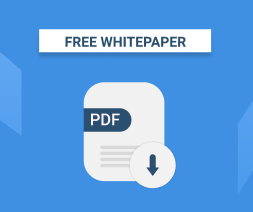MSPs operating in today’s ever-changing IT landscape, which becomes increasingly complex and demanding, must use RMM tools to provide best-in-class service to clients.
Not all IT providers are using RMM solutions, though. For instance, IT providers still offering break-fix services don't feel as though RMM solutions are right for them. For these IT providers to transition to a managed services model, they’re going to need to be able to remotely monitor and manage client IT infrastructures, which is where RMM solutions come in handy.
Despite the many advantages to using RMM solutions, some MSPs still aren’t convinced, but with a persuasive enough argument, that could change.
Ready to provide more than RMM to your clients?

Why Do MSPs Need RMM Solutions?
With an RMM solution, basically, you can monitor customer IT infrastructures and systems from afar, which saves MSPs time, money and resources. For example, instead of having to drive to customer locations to determine the status of devices and networks, technicians can review everything remotely, which enables them to monitor and manage several accounts in real-time and proactively any address issues by examining customer systems holistically through an RMM’s admin console.
RMM software also enables MSPs to automate routine tasks, such as software patching, which reduces the likelihood of human error (e.g., technicians missing customer endpoints).
Choosing the right RMM solution for your needs requires a bit of work on your end.
How Do You Go About Choosing RMM Software?
Just like other kinds of MSP solutions, remote monitoring and management tools vary from one to another. While they oftentimes offer MSPs similar product features and integrations, RMM solutions differentiate themselves in many ways, some are more substantial than others; what matters is the solution you select works for you.
Before examining RMM tools for your business, define the needs of your technicians. On your list, include basic and advanced features you’d like your RMM software to have. Then, do your homework on the top RMM vendors on the market — including Autotask, ConnectWise, Syncro and NinjaRMM — by browsing their products and eliciting reviews from your peers. Eventually, after you’re done exploring your options, it’s time for some routine testing.
Further reading RMM Security for MSPs
Testing out RMM solutions available in the market is something all MSPs should do when shopping around for the right fit. With your team, come up with as many scenarios as possible and have your technicians determine if the solutions you’re considering can handle your simulations.
If the solutions you’re reviewing pass your tests, that’s good, but you’re not done just yet.
Further reading RMM: What MSPs Need to Monitor
Consider Integrations When Reviewing RMM Solutions
With RMM solutions, MSPs typically get much more than just RMM capabilities. Oftentimes, RMM tools aren’t standalone; they offer additional IT services (many of which complement RMM software) for MSPs, which enable RMM vendors to differentiate from one another.
One of the top integrations for RMM solutions is PSA software, which allows MSPs to improve business productivity by reducing human errors, automating billing and reports, and tracking assets and inventory.
There are other integrations for MSPs to consider when comparing RMM tools. For instance, many RMM tools also offer integrations with BDR, endpoint security and documentation solutions.
MSPs not using RMM tools are missing out on enhancing monitoring and remote management capabilities, including, collecting inventory and health data from client infrastructures; executing management tasks; and establishing remote support. While there are many RMM solutions in today’s marketplace, they’re all not the same, even though they provide similar capabilities, so it’s crucial for MSPs to properly vet these products before selecting one.




